Hal Jespersen's D-Day Anniversary and Patton Tour, June 2019
This is my travelogue for the Stephen Ambrose Historical Tours event, “D-Day 75th - Patton’s 3rd Army Tour,” May 30–June 13, 2019. Since this is a very long report, I have broken it into three segments, as follows:
- England, May 29–June 2 (this page)
- Normandy, June 3–8
- To Luxembourg and the Start of the Bulge, June 9–10
- Concluding the Bulge, to the Rhine, and Final Thoughts, June 11–13
Wednesday/Thursday, May 29–30 — to London
British Airways SFO to LHR, departing 7:30 pm, arriving 2:00 pm Thursday. Great flight in super comfy business class in an Airbus A380, but I managed to crush my iPad while sliding the seat into bed mode! Very easy customs and immigration—no forms, no waiting. Heathrow Express train to Paddington Station in under 20 minutes, then a cab ride to The Baileys hotel in Kensington. I had followed a regime of jet lag prevention using an app called Timeshifter, which starts you off with some schedule changes a few days early, and it seemed to work because I was wide awake at the appropriate times. The afternoon was devoted to the Apple Store on Regent Street, repairing (replacing) the iPad. (I have to say that the employees here were super cooperative and friendly. Kudos to Apple UK. Unfortunately, it wasn’t possible to restore my existing AT&T wireless account while outside of the States, so I bought a 15-day 2GB plan from a company called GigSky—$30, which is much cheaper than the $10/day charge I was planning for at AT&T.) Dinner at PizzaExpress down the block.
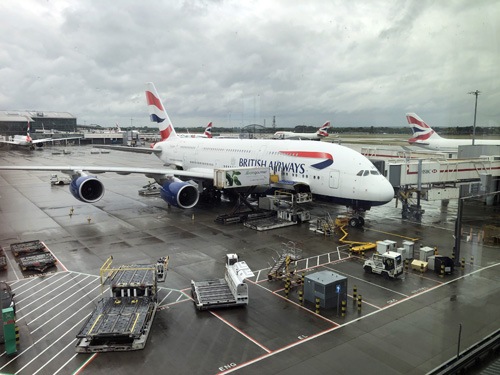
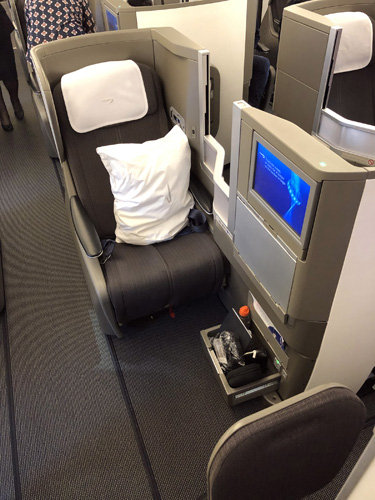

Friday, May 31 — London On My Own
The breakfast buffet is swarming with Stephen Ambrose folks; perhaps they booked the entire hotel. Since my particular tour starts tonight, I had the day free, and I put on a number of miles walking and tubing around. First was the Imperial War Museum; I think the last I time I came here was probably 20 years ago, and it certainly has changed. They have done renovations and spent a lot on graphic designers, so it's all spiffy and modern. There’s an extensive floor on World War I, which was quite interesting, although they sure could have used some good maps. Next floor up was WWII, which was quite sparse in comparison, but signs indicated that new galleries were being constructed. The third floor was a mixture of Cold War, nukes, the Northern Ireland troubles, and Iraq, once again quite superficial and waiting expansion. There was a special room of 35mm prints from D-Day—16th US on Easy Red (Omaha) beach by Robert Capa. The next floor seemed empty, and I didn’t venture up further, so I missed a supposedly good exhibit on the Holocaust.
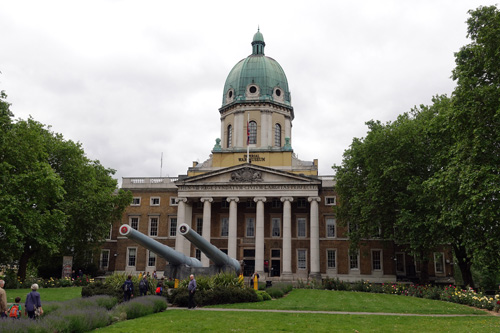
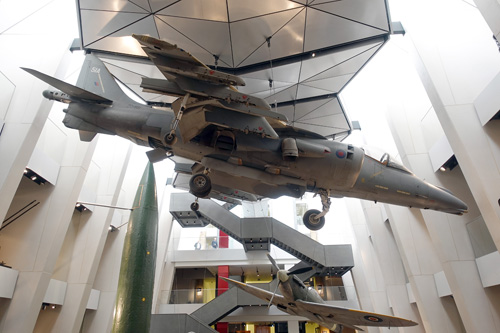
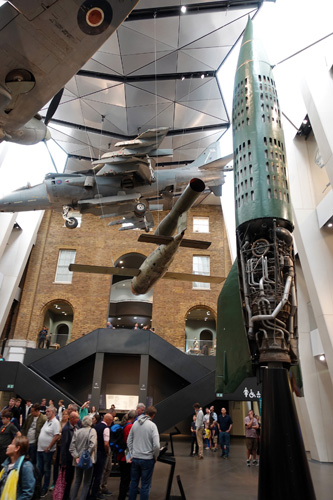
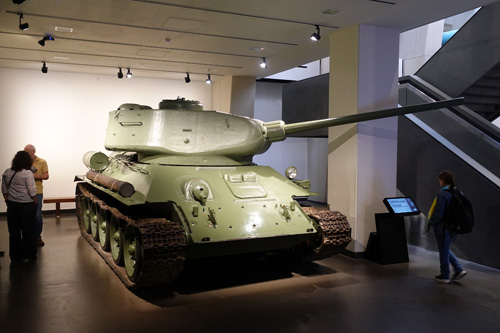
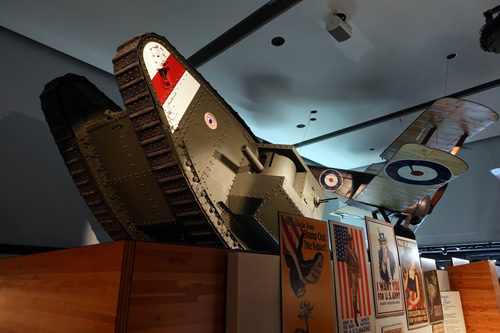
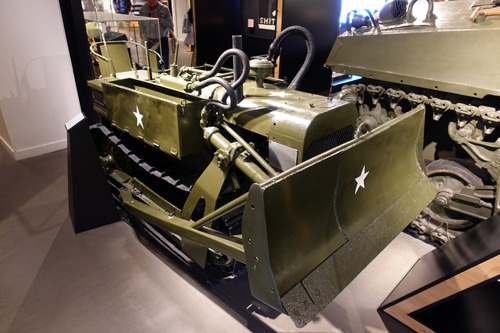
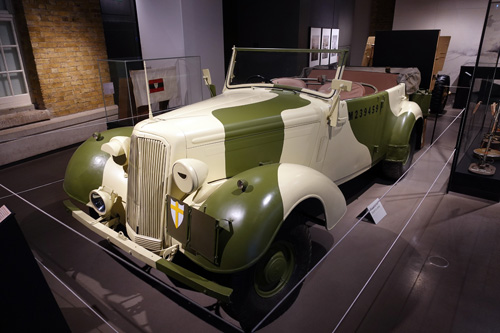
I took a long walk across Westminster Bridge to see Big Ben, but the tower is being renovated, so you can't see anything. Parliament and the Abbey have work going on, too. My destination was the Tate Britain museum to see a special Van Gogh exhibit, but when I arrived I found that they wanted 25 pounds and an hour wait, so I bailed. Instead, I Ubered to the Tate Modern, which has a spectacular setting in an enormous power plant on the Thames. Unfortunately, their exhibits of modern art didn’t interest me much. Another long walk: over the Millennium Bridge towards St Paul’s, then along the river walk, up past the Savoy Hotel, and to Covent Garden, which is picturesque as usual, really packed with shoppers. Then the tube back to the hotel. (I have been entranced by the ease of traveling now. I flash my Apple Watch at the entrances and exits and they bill me the fare on my credit card. It seems like everyone takes “contactless payment” here now—even the black cab from Paddington.)
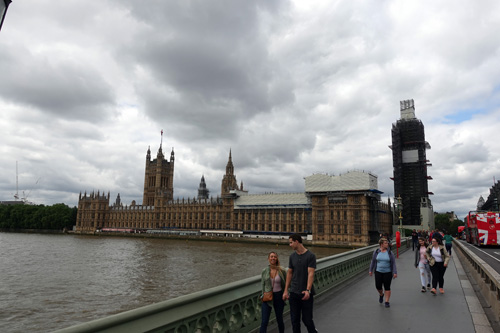
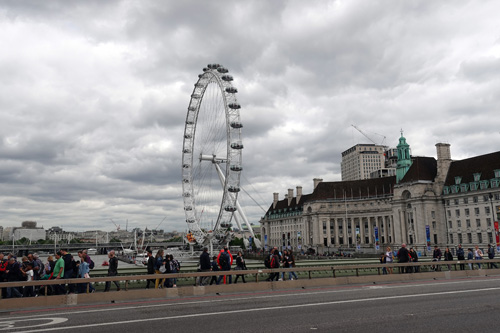
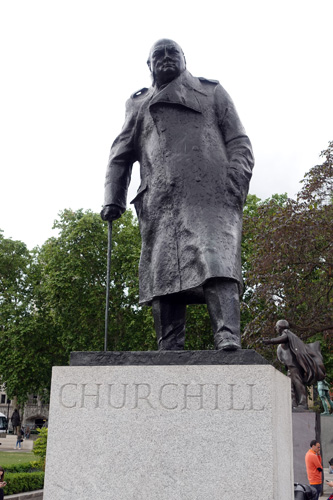
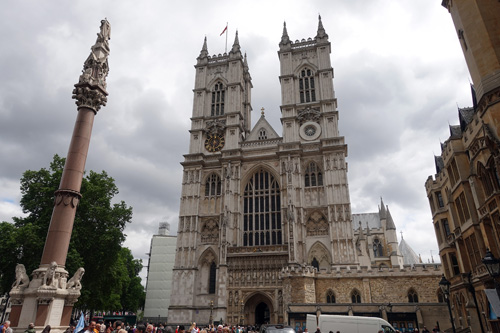
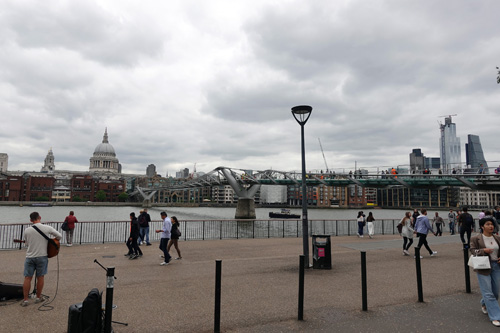
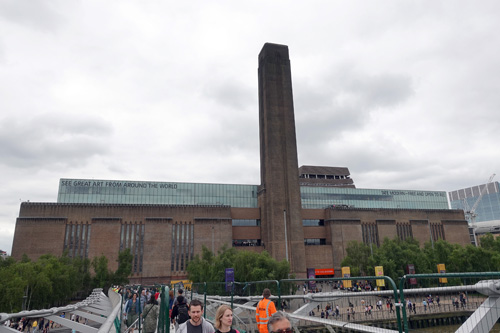
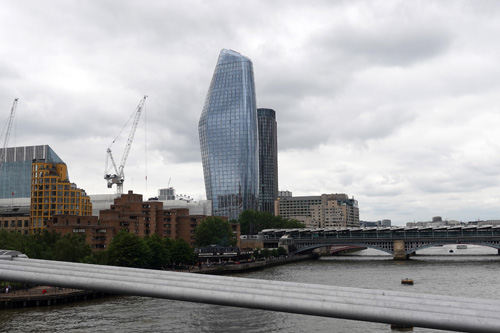
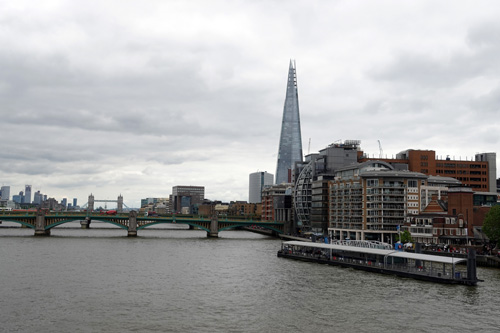
The program started at 6 pm with a reception in the hotel. Dinner at the hotel’s Olives restaurant, a very nice Italian meal. There are 39 of us in the Patton group, including Kevin Hymel (pronounced HEE-mel), Keith Buchanan, and a WWII vet, Dr Stephen Weiss. The latter is 94 years young and is as sharp and vibrant as many who are 70.
Saturday, June 1 — London, RAF Museum
On the bus at 8:45 for a day in London with a “blue badger” official London guide. It was the first bus I have ever encountered in which seatbelts were mandatory, and I heard later that this is the law throughout Europe. (The bus is based in the Netherlands and we will be using it for the entire tour.)
First stop was the Churchill War Rooms. We were faced with a giant line of well-dressed people. It turns out they were queuing for a rehearsal for Trouping the Colours that will occur for real on the queen’s birthday. We bypassed them for the war rooms, which turn out to be an annex of the Imperial War Museum that I visited yesterday. I had come here almost 20 years ago, and the major difference today is that there is an elaborate Winston Churchill museum set up. The museum was well-illustrated and comprehensive about his life, but it was rather dark and organized confusingly. The war rooms are still cramped and claustrophobic. One new thing I learned: the massive concrete and steel “slab” they installed overhead was insufficient to protect against a direct bomb hit, which Churchill neglected to reveal to his staff and cabinet. It was still fun to examine the maps in—wait for it—the Map Room.

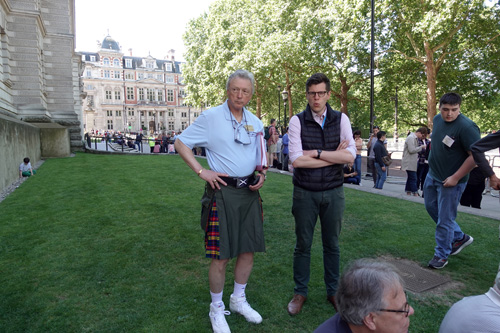
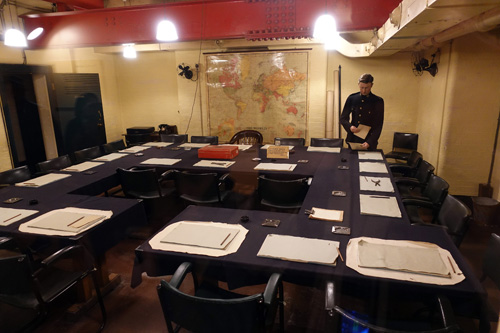
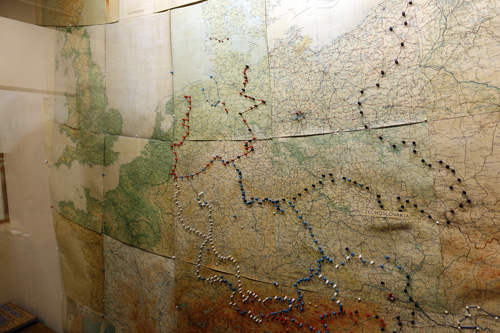
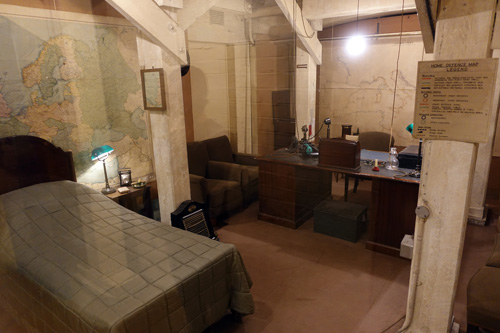
Next was St Paul’s Cathedral, for reasons unclear to me. It’s a sacred place to Londoners, or at least it was during the war, and it suffered two bomb hits, both of which were duds. Apparently the German bombers valued it as a navigational landmark and never targeted it directly. I asked whether Patton had worshipped there, but our guide didn’t know. I was interested to see how many secular dead people were celebrated there. There were numerous large statues of generals and admirals. I visited the American Chapel, where a large book lists the names of the 40,000 Americans who died in the UK during the war; each day they display one page at a time, and today it was primarily the Schwartzes. There are three stained glass windows—the rest of the windows are clear glass—that include symbols/flags of all the states, but I wasn’t able to find California. There’s an interesting exhibit in the Crypt downstairs about restoring the cathedral in the 1920–30s. Apparently Sir Christopher Wren did a very substandard job in 1711 engineering the building for the 44,000-ton dome it supports, and Herculean efforts were necessary to shore it up and forestall condemnation.
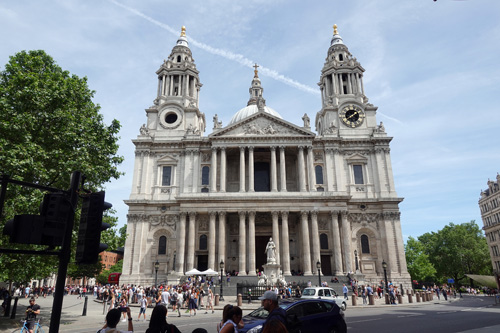

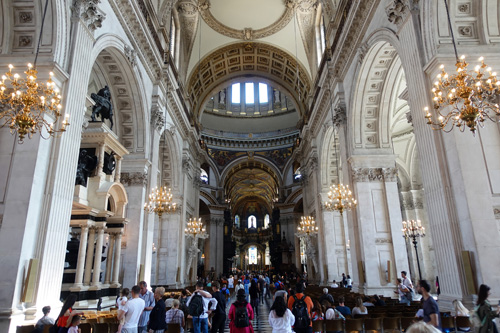
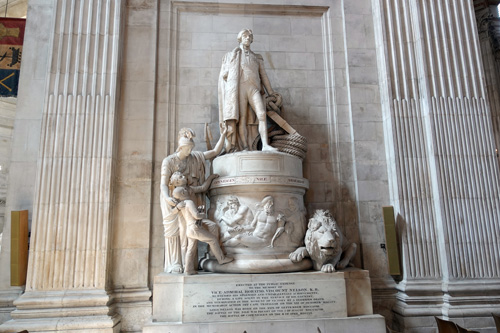
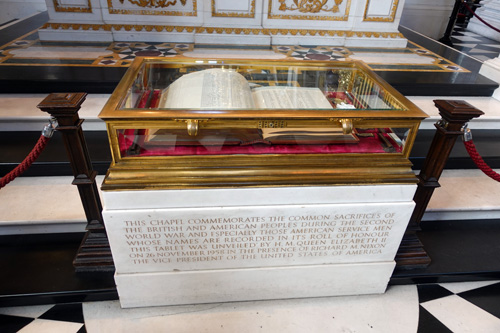
We had lunch on our own, selecting from a number of nearby cafes. Then we bussed to the northwest, about 45 minutes to the Royal Air Force Museum. At first I was quite disappointed with a very superficial, poorly marked, small exhibit, but after trying to kill over 30 minutes in that building, I found out by chance that this was only the first of six “hangars” with probably 75 planes! There were no signs or maps to indicate this—none I saw, anyway—and our guides didn’t mention it either. (I found out later that they were selling the map that revealed this.) If only I had had the foresight to pre-read the Wikipedia article in the museum, which lists every plane in every building. So I had to rush through all the rest, as I only had 45 minutes before we were scheduled to leave. (Of course, in typical tour bus fashion, a couple of folks were about 15 minutes late, so the other 38 of us sat on the bus and waited.) In addition to seeing lots and lots of unusual planes—from my US view—I was surprised by a factoid: Churchill was apparently ashamed of the civilian causalities in German cities and Bomber Command did not receive medals or a memorial for their service, despite losing 55,000 men! It was not until 2012 that this snub was rectified. My only other comment is that the RAF guys must have a limited electrical budget, because some of these hangars were pretty dark. Here are a number of photographs I took inside the museum, but we rushed through so quickly that I did not take detailed notes:
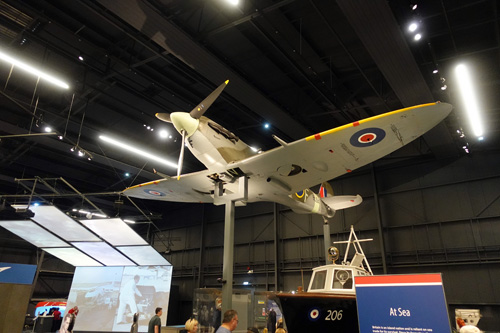
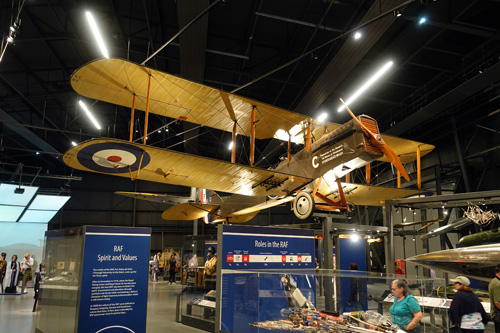
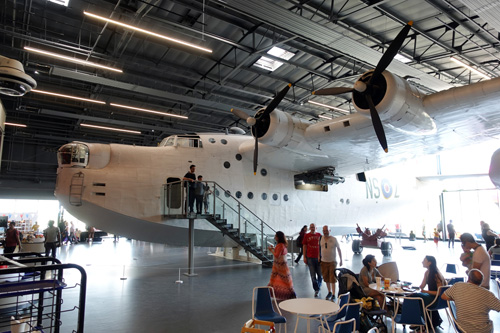
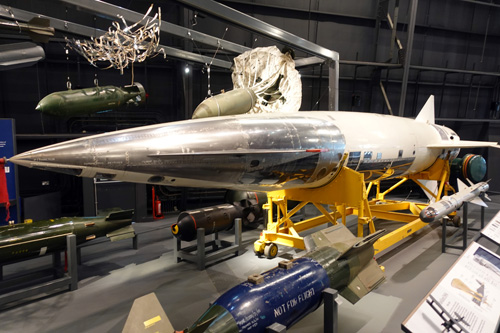
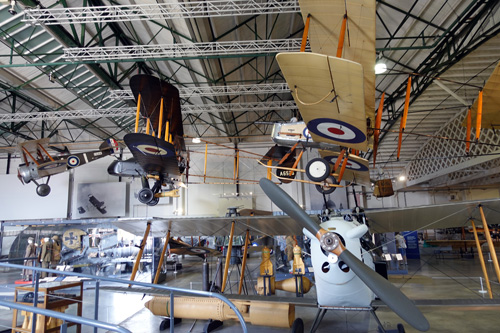
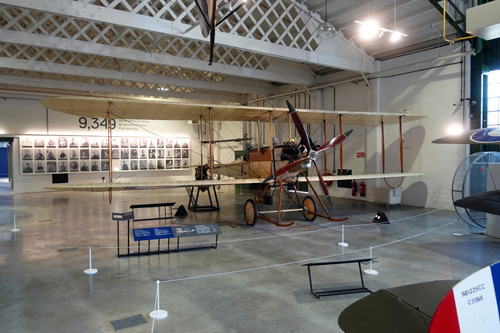
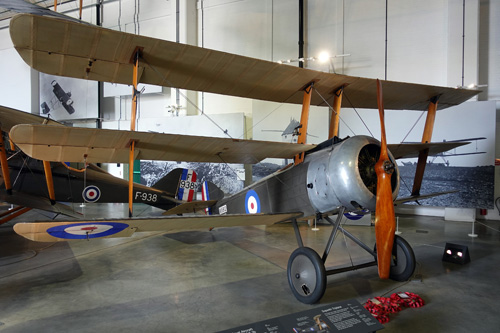

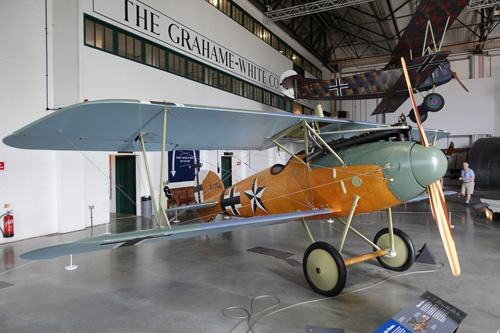
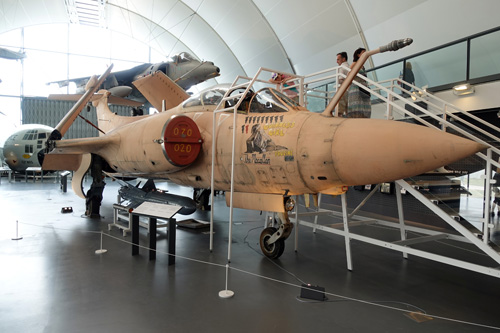
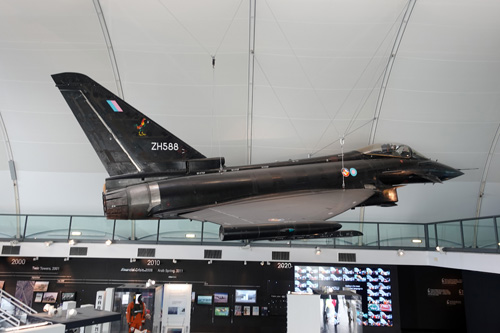
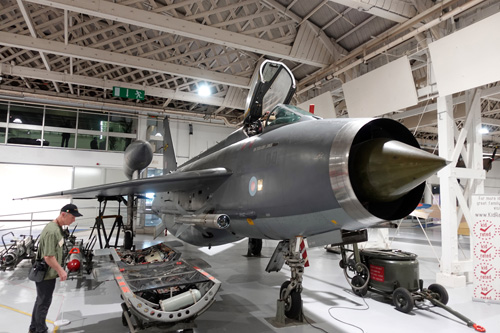
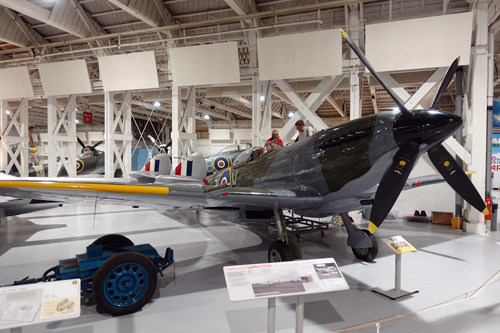
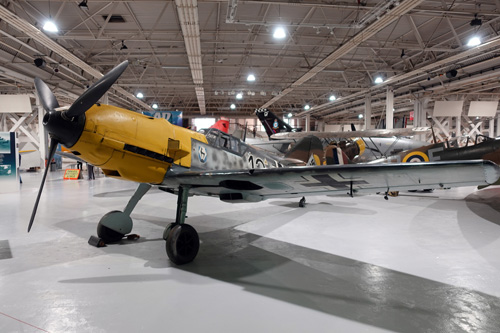
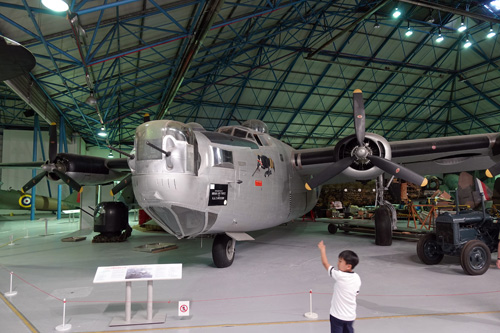
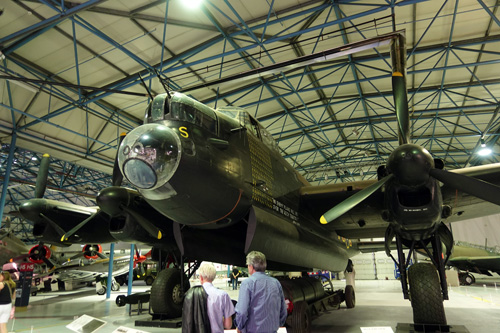
Another 50 minutes back to the hotel and we had dinner on our own. (PizzaExpress again—it’s really quite good.)
Sunday, June 2 — Bletchley Park, Bovington Tank Museum, and Bournemouth
We started off with gorgeous weather, which didn’t last. The hotel was overwhelmed at breakfast with no seats available, so since we had to be on the bus by 8 am, I filched some food for the room and got a Starbucks from across the street. The bus ride to Bletchley was about 80 minutes, and we were occupied along the way by a DVD of The Imitation Game, the Benedict Cumberbatch movie about Alan Turing.
Bletchley Park was really interesting, on a much larger campus than I had imagined. A large mansion on a lake, surrounded by lots of small buildings called huts. There were many detailed exhibits about Enigma/Ultra, the Cryptologic Bombe, cryptography, and famous mathematicians—too many, really, considering the time we had available, so I was not able to get a full grasp of the intricacies. The center here also did a lot of the intel analysis once the codes were broken, so there were lots of rooms with typewriters and maps. I was intrigued to see that many of the maps were from National Geographic and wonder if that is historically accurate, or just expedient for display purposes.
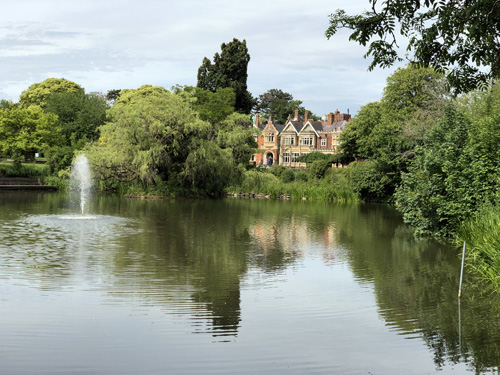
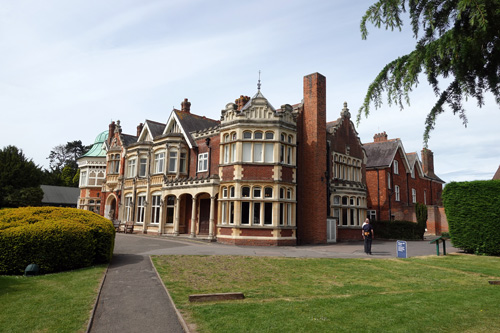
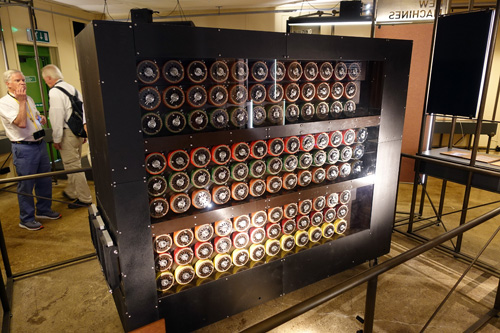
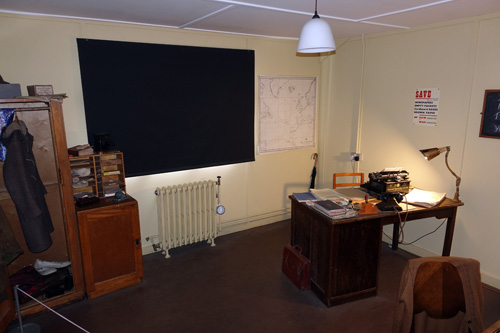

I learned a lot of new info about the Colossus machine used to break the Lorenz SZ40 (“Tunny”) code used by the highest level Germans. Colossus is considered by these folks to be the first programmable electronic computer, acing out the US ENIAC by two years, although since the former was not Turing complete, I’d say that was arguable. There was also a room chock full of info about the Royal Pigeon Service, with some gruesome videos of Nazi peregrine falcons attacking them. (As a former Signal Corps officer familiar with the subject, I admire the heroism of the pigeons in the two world wars.) And there was an excellent movie about Bletchley’s contribution to Operation Fortitude, the deception campaign that preceded Overlord. There is a very complete bookstore with more books about Turing and Enigma than I could have imagined. (British tourism sites seem to take books much more seriously than their US counterparts.)
Then three hours on the bus to Bovington (“Bah-ving-ton”) for “The Tank Museum.” This town out in the sticks was the birthplace of the tank and the museum started in 1923. We had a guide named Pete, a former tank crewman from the 70s, who gave us an outstanding tour. We expected an hour and then we’d be off on our own, but he kept us interested for 1.75 hours and then the museum closed. I read in Wikipedia that they have over 300 vehicles—including the largest tank (versus armored vehicle) collection in the world—but I don’t think we saw more than a couple of dozen, so much more time could have been spent here. This was certainly the nicest tank collection I have ever seen and someday soon I hope to return to the museum for a much longer visit. Too bad they do not have the best current tank in their collection, the US M1 Abrams; Pete said they would love to have one.
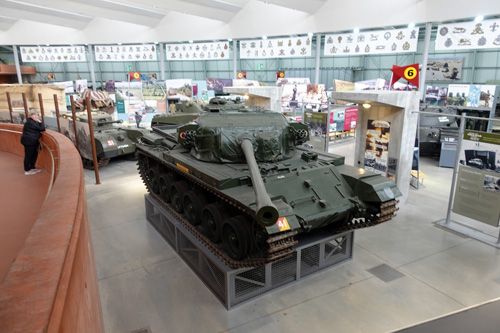
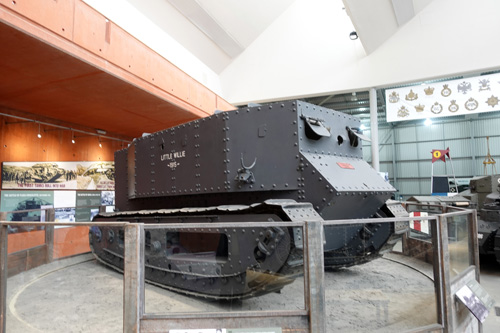
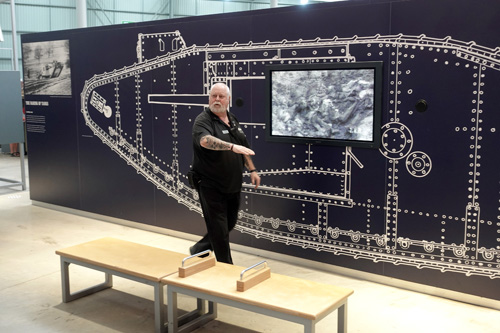
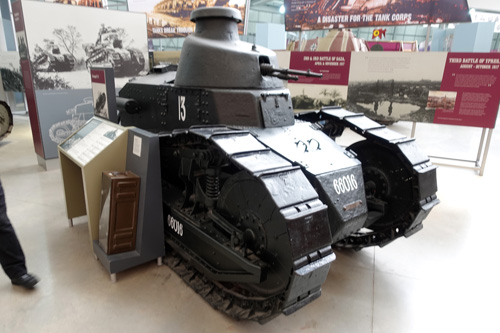

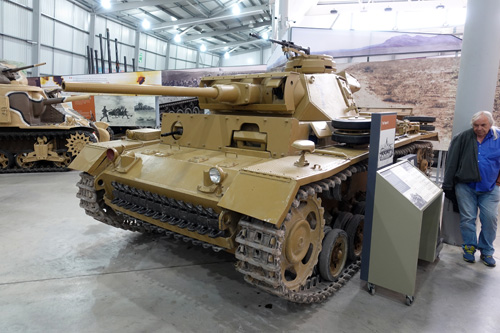
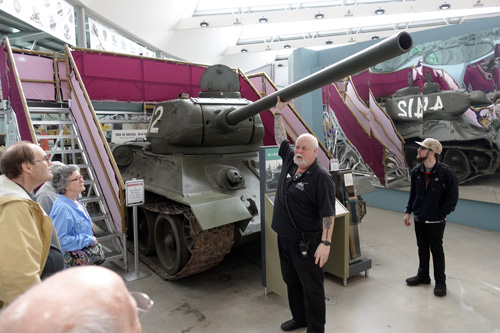
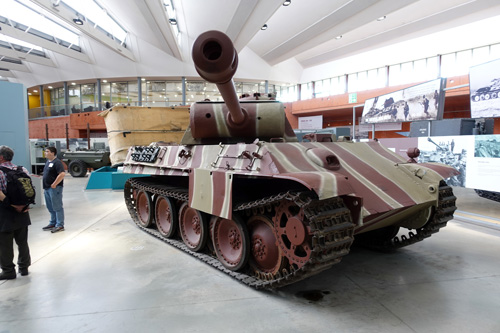
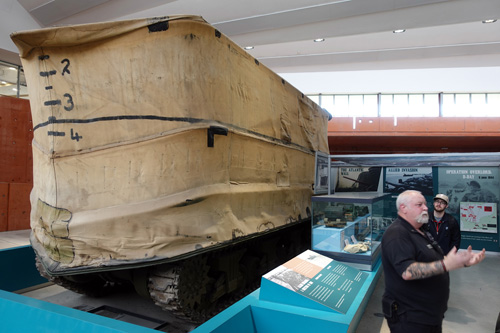
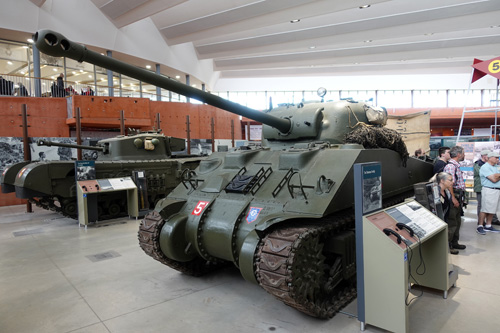



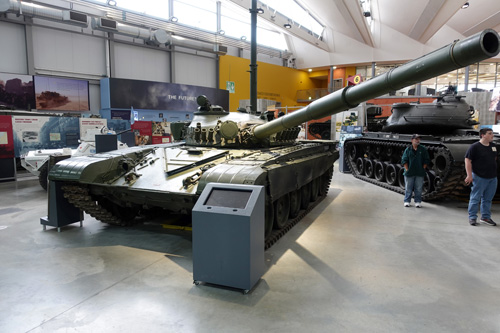
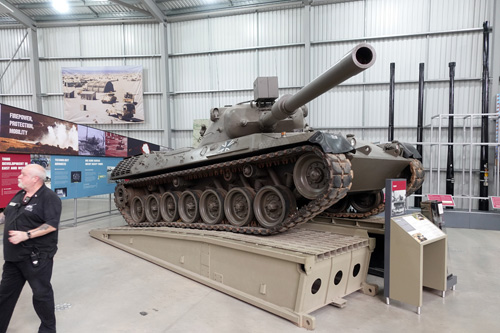
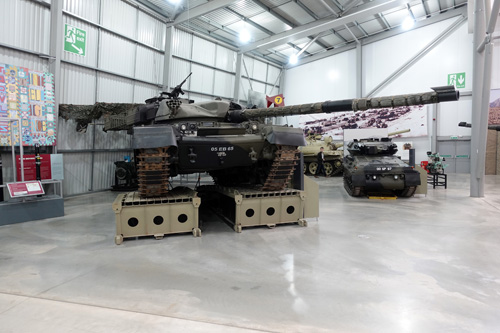

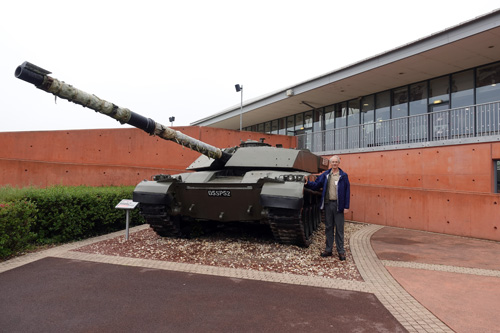
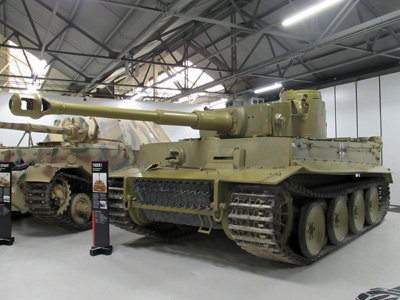
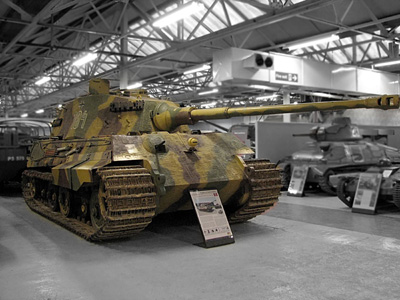
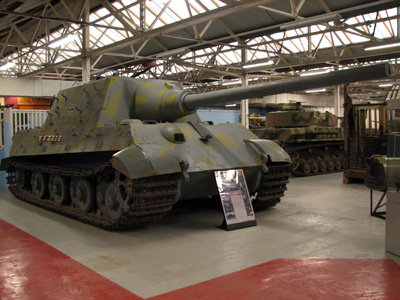
* The final three photos are from Wikipedia. For some reason I neglected to photograph the Tigers.
Our new hotel, for one night, is the Norfolk Royale in Bournemouth, a typical old-fashioned British hotel. Dinner at the hotel.